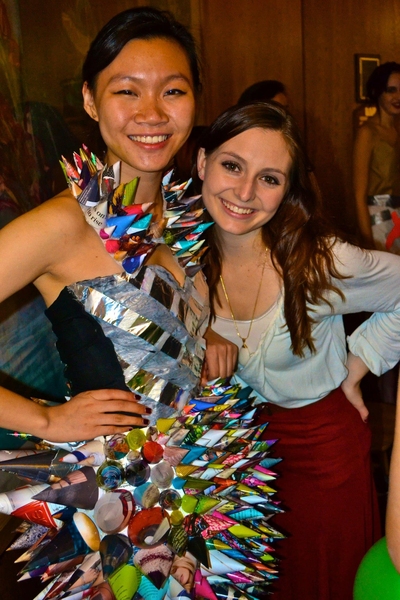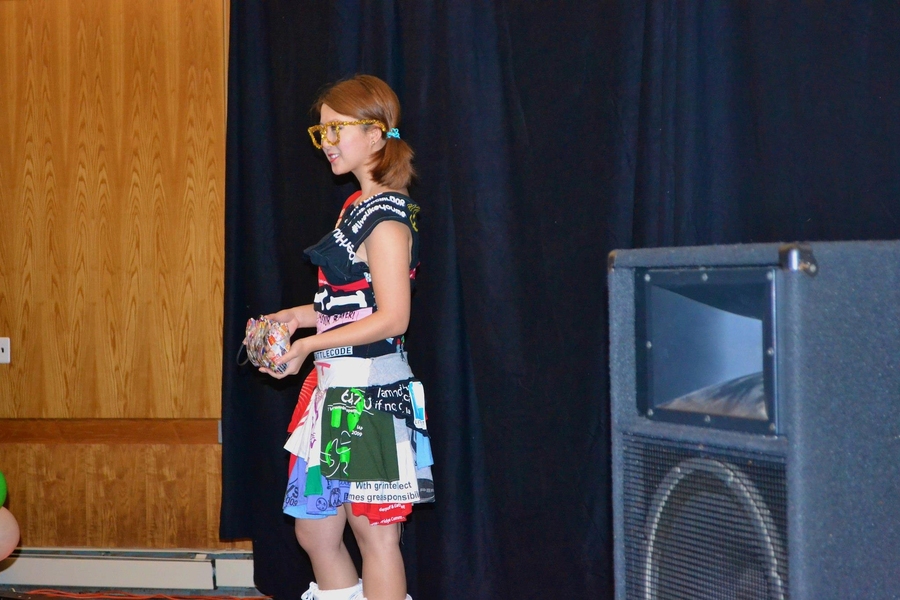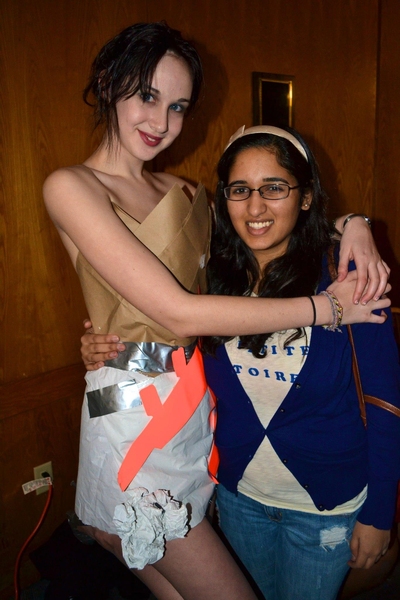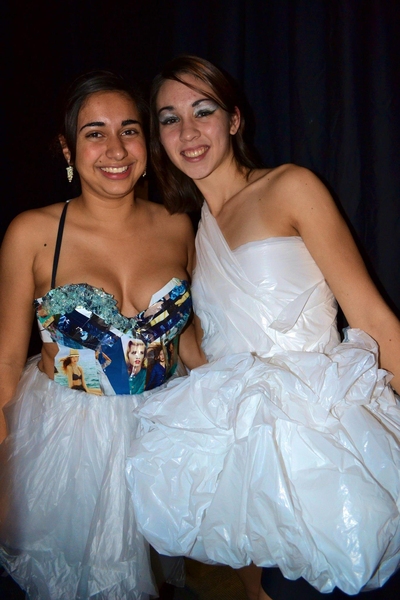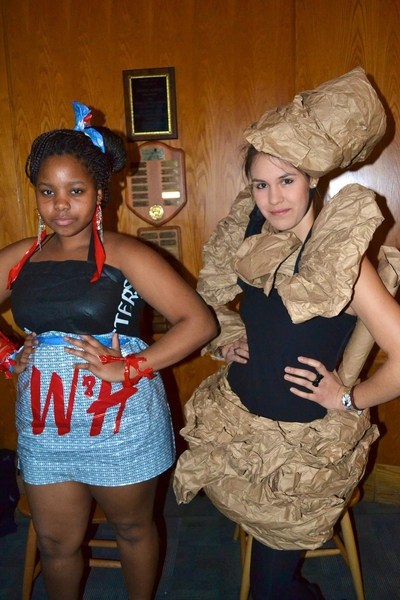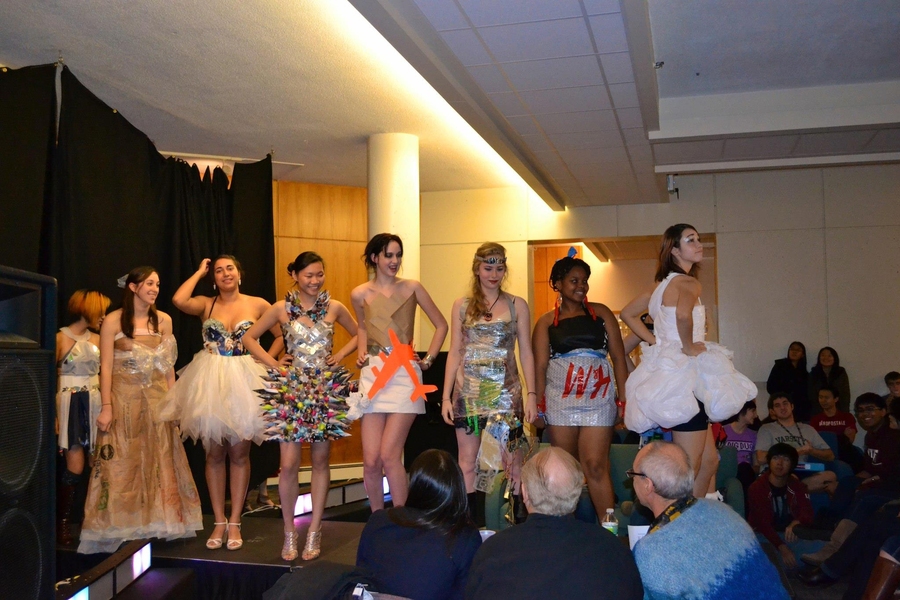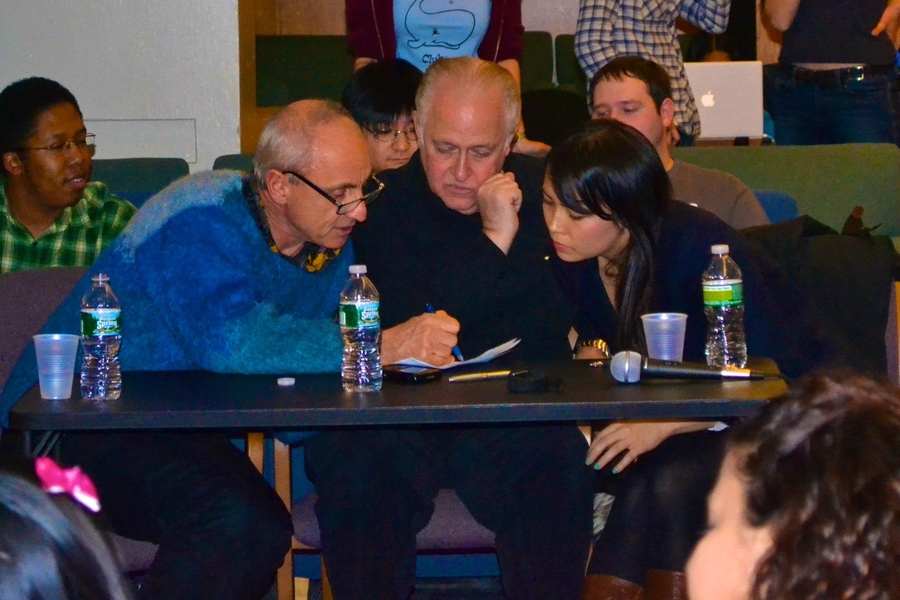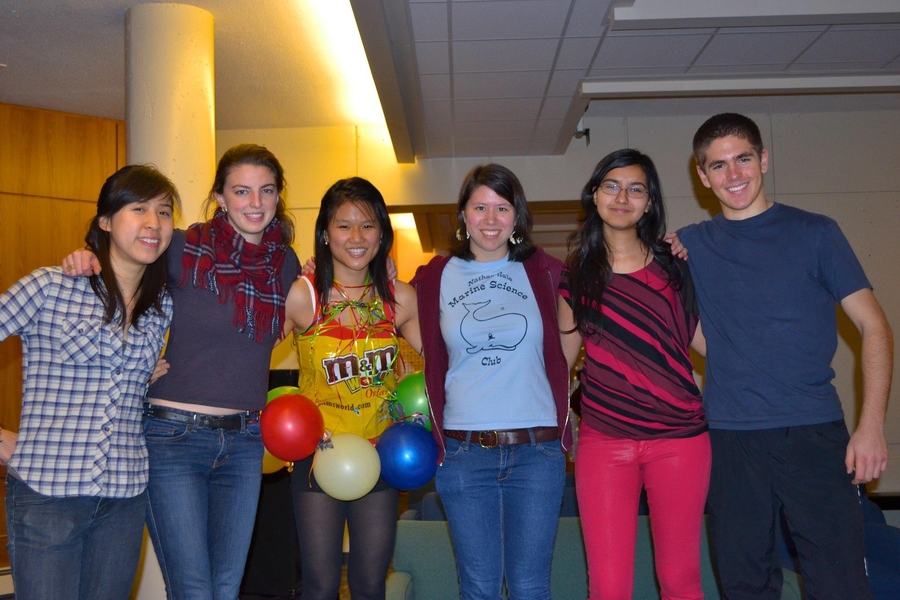This semester, freshman Karen Hao organized an event that provided new hope for completed problem sets, old umbrellas and a nearly infinite number of other common items that too often end up in landfills.
The “Trashion” show, held on Dec. 3, challenged 10 talented student-designers to transform waste into original, fashionable clothing. Nearly 100 students from across campus filled the “Tastefully Furnished Lounge” at Next House to standing-room-only capacity to witness the innovative and sustainable creations.
“MIT students have very creative engineering minds,” Hao says. “The show really appealed to them because it’s a different way to express creativity. It integrates arts and engineering.”
Dean for Student Life Chris Colombo, Physics Senior Lecturer Peter Dourmashkin and Academic Programs Assistant for the MIT Energy Initiative Christie Ko judged the designs on four criteria: originality, recyclability, appearance and feasibility.
“I was very impressed by how the designers were able to use every day trash to create eco-friendly outfits with a high-fashion look,” Colombo says. “I was also impressed by Karen’s efforts to channel the entire Next House community to bring this successful event together.”
Sophomore Angela Chu modeled the dress that won first place. She and sophomore Julianna Mello designed the outfit from discarded problem sets, newspapers and shopping bags. The pair used aluminum to support the dress’s structure and added hundreds of paper cones to the skirt to add flair and texture.
Other top designs included one from junior Christina Qi, who stitched together dozens of old MIT T-shirts to form a stylish dress. Graduate students Alorah Harman and Matt Behlmann submitted a frock inspired by a de-ribbed umbrella and an old shoe.
To execute the show, Hao received help from a number of Next House-based student groups. Next Act, a group that performs a full-length musical every spring, provided curtains for the Trashion show. While Next Make, a group dedicated to building electronic and mechanical projects, wired an elaborate lighting system, installed TV screens and blasted music for the runway models.
The Undergraduate Association's Sustainability committee also helped with the planning process. To fund the event, Hao appealed to the Undergraduate Association Senate and the Next House Executive Committee, known as Next Exec.
“This year, Next Exec has tried to boost the social atmosphere in Next House,” says junior Alec Lai, president of Next Exec. “The Trashion show was very well planned and rigorously budgeted. It was a unique idea for a great campus-wide event. It would have been hard not to fund.”
The show also marked the first event of Next House’s newest student interest group, Next Sustain. Hao founded Next Sustain in the first few weeks of her arrival on campus. The group will evaluate some of Next House’s practices related to sustainability and the environment.
Hao is just one of many first-year students who has jumped into leadership roles in Next House. “This year’s freshman class is very active,” Lai says. “We encourage new students to get involved with activities in Next House. A good portion of our executive board is freshmen.”
Next year as a sophomore, Hao plans to host an even more spectacular Trashion show.
“If we make this an annual event, people will start incorporating even crazier ideas,” Hao says. “The original ideas were amazing, and it was inspiring to see all of the Next House groups collaborate to help pull the show together.”
To learn more, visit the Next House website: http://next.mit.edu/
The “Trashion” show, held on Dec. 3, challenged 10 talented student-designers to transform waste into original, fashionable clothing. Nearly 100 students from across campus filled the “Tastefully Furnished Lounge” at Next House to standing-room-only capacity to witness the innovative and sustainable creations.
“MIT students have very creative engineering minds,” Hao says. “The show really appealed to them because it’s a different way to express creativity. It integrates arts and engineering.”
Dean for Student Life Chris Colombo, Physics Senior Lecturer Peter Dourmashkin and Academic Programs Assistant for the MIT Energy Initiative Christie Ko judged the designs on four criteria: originality, recyclability, appearance and feasibility.
“I was very impressed by how the designers were able to use every day trash to create eco-friendly outfits with a high-fashion look,” Colombo says. “I was also impressed by Karen’s efforts to channel the entire Next House community to bring this successful event together.”
Sophomore Angela Chu modeled the dress that won first place. She and sophomore Julianna Mello designed the outfit from discarded problem sets, newspapers and shopping bags. The pair used aluminum to support the dress’s structure and added hundreds of paper cones to the skirt to add flair and texture.
Other top designs included one from junior Christina Qi, who stitched together dozens of old MIT T-shirts to form a stylish dress. Graduate students Alorah Harman and Matt Behlmann submitted a frock inspired by a de-ribbed umbrella and an old shoe.
To execute the show, Hao received help from a number of Next House-based student groups. Next Act, a group that performs a full-length musical every spring, provided curtains for the Trashion show. While Next Make, a group dedicated to building electronic and mechanical projects, wired an elaborate lighting system, installed TV screens and blasted music for the runway models.
The Undergraduate Association's Sustainability committee also helped with the planning process. To fund the event, Hao appealed to the Undergraduate Association Senate and the Next House Executive Committee, known as Next Exec.
“This year, Next Exec has tried to boost the social atmosphere in Next House,” says junior Alec Lai, president of Next Exec. “The Trashion show was very well planned and rigorously budgeted. It was a unique idea for a great campus-wide event. It would have been hard not to fund.”
The show also marked the first event of Next House’s newest student interest group, Next Sustain. Hao founded Next Sustain in the first few weeks of her arrival on campus. The group will evaluate some of Next House’s practices related to sustainability and the environment.
Hao is just one of many first-year students who has jumped into leadership roles in Next House. “This year’s freshman class is very active,” Lai says. “We encourage new students to get involved with activities in Next House. A good portion of our executive board is freshmen.”
Next year as a sophomore, Hao plans to host an even more spectacular Trashion show.
“If we make this an annual event, people will start incorporating even crazier ideas,” Hao says. “The original ideas were amazing, and it was inspiring to see all of the Next House groups collaborate to help pull the show together.”
To learn more, visit the Next House website: http://next.mit.edu/
